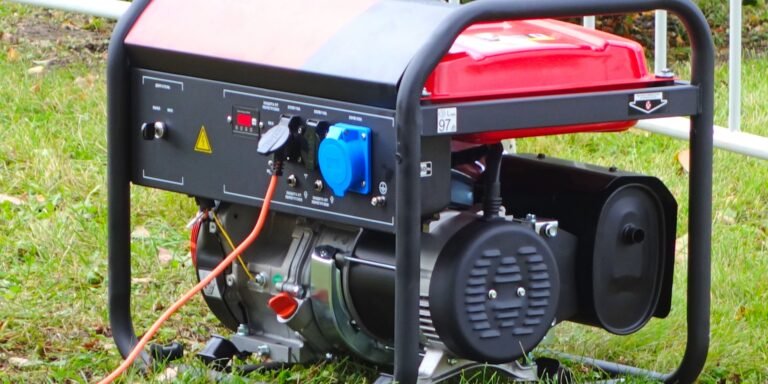How To Make and Operate An off Grid Firdge
This post may contain affiliate links, full disclosure here.
There’s always a need to have a cool drink, especially after completing a time-consuming task that took up most of your day.
Imagine rushing home from work and rushing straight to your refrigerator, only to find your favourite drink is still as warm as your body temperature.
Is it possible that there was a power outage? No way.
You just remembered hearing on the radio about a defective transmission line on your block that was affecting your home. You’re now enraged and want to slam the fridge and break several bottles.
But, hey, whatever. Please bear with me. Did you realise there are a slew of measures you may use to ensure such a disaster never happens again?
This post will show you how to cool your drinks and foods without relying on the national grid. This article has been divided into four sections:
In an emergency, the best cooling method for your food.
How can I turn on my refrigerator if I don’t have access to electricity?
How big of a solar system do I need to run a refrigerator?
What are some alternatives to refrigerators for people who live off the grid?
Best Cooling Solution For Your Food In An Emergency Situation
Refrigerators are unquestionably useful.
What do you do, though, if you need to get that fish iced up to keep it from spoiling and your refrigerator isn’t working due of a power outage?
Off-grid residents typically have a difficult time finding a refrigerator that works for them at all times, thus this is a necessity that should not be disregarded. You don’t want your food to spoil because you don’t have enough power to run your refrigerator.
Simply said, an off-grid refrigerator is required. You’ll also require a flawless one. An off-grid refrigerator is one that can operate without electricity or with only a little amount of power.
They’re frequently built to accommodate a variety of power sources, completely responsive cooling systems, substantial insulation, and specialised refrigerator parts.
As a result, having an off-grid refrigerator on hand at all times is your best bet. In the past, the only choice was to use an AC on-grid refrigerator, which took a lot of power to run.
However, as long as there was electricity, they kept our foods and prescriptions at a safe temperature.
We now have more options than ever before thanks to advancements in solar power generation. Besides, they’re perfectly adequate for the task. You must consider these criteria while selecting an off-grid refrigerator that is the best fit for your needs.
How much electricity do you plan to devote to refrigeration?
Assume you have access to a reliable solar power system with massive battery storage. In that situation, you may have fewer concerns because, with such massive settings, your standard high-end refrigerator and freezer sets may suffice.
This isn’t the case at all. You’d have to do some rigorous math to figure out how many batteries and solar panels you’d need for the amount of refrigeration you’d require per day.
When buying for an electrically powered refrigerator, look for the EnergyStar sign or any other equivalent label to get a better idea.
It will give you a better estimate of how much electricity you will require over the course of a month.
How much room do you have in your house, and how much food do you need to keep at a lower temperature?
Off-grid refrigerators come in a variety of sizes. Some are small and compact, while others are much larger.
How long do your off-grid refrigerators survive and how easy are they to maintain?
Durability is now a major factor in deciding what to buy and what not to buy. But how do you know for sure? Choosing ones that are well-publicized may be beneficial.
That isn’t a certainty, though. The majority of today’s items aren’t as long-lasting as they once were. Any off-grid refrigerator you choose is supposed to work flawlessly 24 hours a day, seven days a week.
You’ll also want to make sure it’s simple to maintain and fix if something goes wrong. You don’t want to have to wait days or weeks for a specialist tech officer to come out and solve a simple problem with your refrigerator. That’s a big no-no.
What is your current financial situation?
Do you frequently experience problems with your credit card? Are you putting money aside for a big annual vacation? Are you looking for a new place to call home?
When it comes to purchasing your off-grid refrigerator, all elements must be taken into account. Prices can range from $50 for basic chilling choices to $3000 for higher-quality solar-powered models.
How To Run An Off-Grid Fridge?
Refrigerators require constant access to power in order to keep your food safe and cool.
It may appear hard to do with solar power, but remember that with the right solar power arrangement and carefully calculated power requirements, you can connect any refrigerator into solar power.
Several components, in addition to your solar panels, will be required to efficiently set up solar electricity that will be acceptable for your off-grid refrigerator.
To store enough electricity for your off-grid refrigerator to run at night when the sun has set or when there is an eclipse, you’ll need good batteries.
You’ll be employing a charge controller to smooth out the power flow from your solar panels to your battery. The charge controller is a crucial component that must not be disregarded.
It protects your battery against power fluctuations caused by changes in the strength of the sun’s beams. It guarantees that your battery receives the proper voltage and current at all times.
You’ll also need an inverter to convert the direct current (DC) electricity supplied by your battery to the alternating current (AC) power required by your refrigerator.
Do I Need a Solar System To Make It Work?
When planning your solar power system, keep in mind the average power rate that your off-grid refrigerator will use.
Check the nameplate ratings to establish the proper and actual power requirements for your refrigerator. They’re usually hidden somewhere inside your refrigerator.
The nameplate ratings list the voltage and current requirements of the appliance. A refrigerator, for example, may have a voltage of 223 volts and a current of 7.4 amps. To compute the power demand, multiply the two numbers together. It would produce a power output of 223 x 7.4 = 1650.2 watts.
Depending on the operational conditions, different refrigerators utilise power in different ways. It will stay cool for a little longer if it contains multiple previously frozen goods, for example. If the room temperature is cool, it will also stay cool for longer. In this state, it will not switch on as frequently as you may expect.
When the refrigerator’s air compressor starts up, it normally utilises a burst of energy that triples the average running current. This rapid increase in power consumption is not always a concern unless your solar power system is insufficiently strong. The refrigerator, on the other hand, reverts to the typical power consumption indicated by the nameplate voltage and current.
A standard solar battery provides 12 volts of electrical energy for a certain number of amp-hours. The capacity of a battery is measured in amp-hours. The amp-hours represent the number of amperes drawn from a battery over a given time period.
A battery should be rated for a 20-hour work cycle. A 200 amp-hour battery, for example, would theoretically provide 10 amps per hour over a 20-hour period. Almost all solar batteries will typically provide enough current for both the refrigerator and other appliances.
The inverters that convert DC battery power to AC power must be chosen with care. The majority of those on the market are inefficient, losing up to 50% of their power during the conversion.
Inverters with higher efficiency ratings should be sought after. In addition, when calculating the power requirements of your refrigerator, you must account for inverter inefficiency.
Alternative Refrigerators for my Off-Grid Lifestyle
We’ve seen the solar-powered off-grid refrigerators and can confirm the following:
To operate without interruption, they must have an energy efficiency of at least 5 kW monthly.
They can cost as little as $1000 and as much as $2000.
They vary in size; some are small and compact, while others are large and upright.
They are the most dependable off-grid cooling systems, with plenty of battery storage and continuous sunlight.
Solar refrigerators have been around for a short time and are relatively new to the off-grid scenario. However, they have become the only viable option, bringing ever-increasing research and development into solar cells and bats.
They operate in the same way as traditional refrigerators, but they provide significantly higher efficiency rates due to a combination of more robust insulation and more elaborate compressor systems.
In the electrical and electronics market, you can find both AC and DC solar-powered refrigerators. Each type of solar system module you install and inverter you use has advantages and disadvantages.
DC solar systems, for example, draw their power directly from the battery storage, avoiding the conversion loss that is frequently associated with the use of powerful high-end inverters.
Despite this appealing feature, DC refrigerators are far more expensive than their AC counterparts, which are still rated as expensive on average. AC solar refrigerators operate on 120/240 volts, just like traditional refrigerators, but they require powerful, pure sine wave inverters to operate safely.
Given the high cost of such an inverter, some people prefer modified sine wave inverters. Still, there’s a chance that a minor mistake will render your expensive new refrigerator useless.
Another advantage of the AC refrigerator over the DC refrigerator is the wide variety of AC refrigerator types available on the market. This is not the case with direct current refrigerators.
In a nutshell, solar-powered refrigerators are advantageous due to their relatively low power draw on the solar system, the availability of high-efficiency refrigerators and freezers, and the wide range of sizes available to consumers.
They, on the other hand, will not power up unless the sun shines, are expensive, difficult to repair, easily affected by environmental temperatures, and may require a pure sine wave inverter for conversion.
Your thermoelectric refrigerators are another off-grid cooling option. They have a monthly energy efficiency of over 2,000 kW.
They are generally less expensive, with prices ranging from $50 to $200 for a compact mini-fridge size. They work best in situations where very small-scale refrigeration is required or in already cold climates.
Thermoelectric refrigerators operate with very little power by using compressor-less refrigeration and relying on the Peltier effect. The main advantages of off-grid thermoelectric refrigerators are their low cost, durability, and ability to operate efficiently with little energy and in a small space.
They are simple to maintain, and because there are no moving parts, they can easily last for centuries if desired. Their disadvantages are their low cooling and inability to scale up in size.
They lose efficiency as they grow in size. That is, once the size exceeds that of a mini-fridge, it will consume far more power for far less cooling, as opposed to a solar refrigerator.
Propane refrigerators are the last on the list of off-grid refrigerator alternatives, with an energy efficiency of 60 to 90 gallons of propane per year, which costs around $120 to $180 on average.
Off-grid propane refrigerators with microscopic models start at $500 and can cost more than $2,000 for more robust models.
They are also available in a variety of sizes and are excellent choices when sunlight is insufficient for solar power systems.







